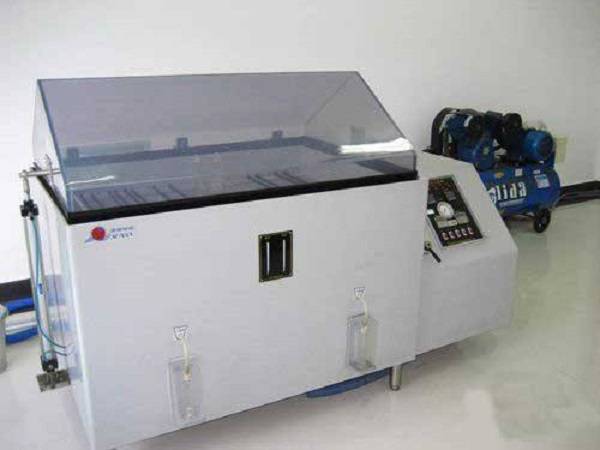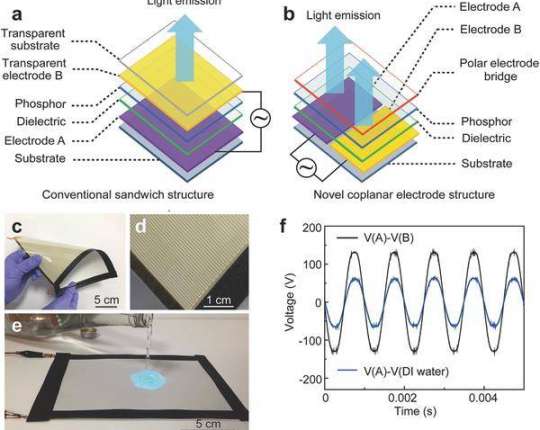1 IntroductionCorrosion to metal materials caused by the huge loss of huge. Some people count the annual corrosion of scrap metal around 100 million tons, accounting for 20% to 40% of annual production. And with the process of industrialization, corrosion problems become more serious, the United States in 1949 corrosion consumption (material consumption and corrosion) to 50 billion US dollars, 1975, 70 billion US dollars, to 1985 as high as 168 billion US dollars, compared with 1949 increased More than 80 times. It is estimated that the world’s annual scrap due to corrosion of steel equipment equivalent to 30% of annual production. Obviously, the destruction of metal components, its value is much greater than the value of metal materials; developed countries each year due to corrosion caused by economic losses accounted for about 2% to 4% of the gross national product; the United States each year due to corrosion to consume 3.4% Of the energy; China’s annual economic losses caused by corrosion at least 20 billion. The great harm of corrosion is not only reflected in the economic loss, it will bring heavy casualties, environmental pollution, waste of resources, hinder the development of new technologies to promote the loss of natural resources.2 salt spray corrosion background and mechanismCorrosion is damage or deterioration caused by the material or its properties under the action of the environment. Most of the corrosion occurs in the atmosphere, the atmosphere contains oxygen, humidity, temperature changes and pollutants and other corrosive factors and corrosion factors.Salt spray corrosion is a common and most damaging atmospheric corrosion. Where salt spray refers to the atmosphere of chloride, its main corrosion component is sodium chloride. Salt mist corrosion of the surface of the metal material is due to chloride ions penetrate the metal surface of the oxide layer and the protective layer and the internal metal electrochemical reaction caused. At the same time, the chloride ion contains a certain hydration energy, easily adsorbed on the surface of the metal pores, cracks and replace the chlorinated layer of oxygen, the insoluble oxide into soluble chloride, the passive surface becomes lively Surface, resulting in a very bad product adverse reactions.Anode: The metal loses electrons into metal cations and enters the solution in the form of hydrated ions while leaving considerable electrons in the metal.Me + nH2O → Me2 + · nH2O + 2e-Cathode: the remaining electrons remaining in the cathode metal, depolarized by oxygen, to restore and absorb electrons, to become hydroxide ions.O2 + nH2O + 4e- → 4OH-Electrolyte: sodium chloride dissociation and the formation of sodium ions and chloride ions, part of the chloride ions, metal ions and hydroxide ions into a metal corrosion.2Me2 ++ 2Cl- + 2OH- → MeCl2 Me (OH) 23 salt spray corrosion hazards1) salt spray corrosion will destroy the metal protective layer, it lost decorative, reduce the mechanical strength;2) some electronic components and electrical lines, due to corrosion caused by power line interruption, especially in a vibrating environment, especially serious;3) When the salt spray falls on the insulator surface, the surface resistance will be reduced; the insulator absorbs the salt solution, its volume resistance will be reduced by four orders of magnitude;4) The moving parts of the mechanical parts or moving parts are increased in friction due to the generation of corrosive substances and cause the moving parts to be stuck.4 metal salt spray test testSalt spray test is divided into natural environmental exposure test and artificial acceleration simulation environment test, the latter is the use of salt spray chamber, in its volume space with artificial methods to create salt spray environment to the product of salt spray corrosion performance quality Assessment.Compared with the natural environment, the salt concentration of chloride salt environment, can be the general natural salt spray content of several times or several times, so that the corrosion rate greatly improved, the product salt spray test, the results of the Time is greatly shortened. If a sample is tested in a natural exposure environment, it may take one year to be corroded and a similar result can be obtained for 24 hours in the simulated salt spray environment. But the artificial acceleration simulation test is still different from the natural environment, and therefore can not be replaced.4.1 Test equipment4.2 Scope of application1) steel surface copper + nickel + chromium or nickel + chromium;2) copper or copper alloy surface nickel + chromium;3) 300 series or 400 series stainless steel surface nickel + chromium;4) aluminum or aluminum alloy surface copper + nickel + chromium;5) zinc alloy surface copper + nickel + chromium;6) plastic plating parts.4.3 Test methods4.3.1 Neutral Salt Spray Test (NSS Test)Is the earliest widely used in the field of accelerated corrosion test method. It uses 5% sodium chloride solution, the solution PH value adjusted in the neutral range (6 ~ 7) as a spray solution. The test temperature is 35 ℃, requiring the sedimentation rate of salt spray between 1 ~ 2ml / 80cm · h.4.3.2 Acetate spray test (ASS test)Is based on the neutral salt spray test developed on the basis of. It is in 5% sodium chloride solution by adding some glacial acetic acid, the solution of the PH value is reduced to about 3, the solution becomes acidic, and finally the formation of salt mist from neutral salt mist into acidic. Its corrosion rate is about 3 times faster than the NSS test.4.3.3 Copper Salt Accelerated Acetate Fog Test (LRHS-663P-RY)Is a newly developed abroad, a rapid salt spray corrosion test, the test temperature of 50 ℃, salt solution by adding a small amount of copper salt – copper chloride, strongly induced corrosion. Its corrosion rate is about 8 times the NSS test.4.3.4 alternating salt spray testIs a comprehensive salt spray test, which is actually a neutral salt spray test plus a constant damp heat test. It is mainly used for cavity-type machine products, through the tidal environment of the infiltration, so that salt spray corrosion not only in the product surface, but also within the product. It is the product in the salt spray and hot and humid two environmental conditions under the alternating conversion, the final assessment of the whole product of electrical properties and mechanical properties have changed.4.4 Influencing factorsThe main factors influencing the results of salt spray test include: temperature and humidity of test, concentration of salt solution, sample placement angle, pH value of salt solution, salt spray settlement and spray method.1) Test temperature and humidityTemperature and relative humidity affect the corrosion of salt spray. The critical relative humidity of metal corrosion is about 70%. When the relative humidity reaches or exceeds this critical humidity, the salt will deliquescence and form an electrolyte with good electrical conductivity. When the relative humidity is reduced, the salt solution concentration will increase until the precipitation of crystallization salt, corrosion rate correspondingly reduced. The higher the test temperature, the faster the salt spray corrosion rate. For the neutral salt spray test, most scholars believe that the test temperature is more appropriate at 35 ℃.2) the concentration of salt solutionThe effect of the concentration of the salt solution on the corrosion rate is related to the type of material and coating. When the concentration is more than 5%, the corrosion rate of these metals decreases with the increase of the concentration. When the concentration is more than 5%, the corrosion rate of these metals decreases with the increase of the concentration.3) the placement angle of the sampleThe placement angle of the sample has a significant effect on the results of the salt spray test. Salt sedimentation direction is close to the vertical direction, the sample placed horizontally, it has the largest projection area, the sample surface to withstand the maximum amount of salt spray, so the most serious corrosion. GB / T2423.17-93 standard “flat plate sample placement method, the test surface should be made with the vertical direction of 30 degrees.4) the pH of the salt solutionThe pH value of the salt solution is one of the main factors affecting the salt spray test results. The lower the pH value, the higher the concentration of hydrogen ions in the solution, the stronger the acidity and the stronger the corrosivity. The salt spray test of Fe / Zn, Fe / Cd, Fe / Cu / Ni / Cr and other electroplating parts showed that the corrosion rate of the salt solution was higher than that of the pH value of 3.0, 7.2 neutral salt spray test (NSS) harsh 1.5 to 2.0 times.5) salt spray settlement and spray method6) the duration of the test4.5 Determination of resultsThe purpose of the salt spray test is to assess the quality of the salt spray resistance of the product or metal material, and the salt spray test result is the judgment of the quality of the product. Whether the judgment result is correct or not is the correct measurement of the product or metal salt spray The key to corrosion quality. The determination method of salt spray test results includes rating judgment method, weighing judgment method, determination method of corrosive material and statistical analysis method of corrosion data.1) rating determination method: the corrosion area and the total area ratio of the percentage of a certain method is divided into several levels, with a certain level as a basis for qualified, suitable for flat panel evaluation.2) Weighing Judgment: The corrosion resistance of the sample is evaluated by calculating the weight (or weight gain) of the corrosion loss by changing the weight of the sample before and after the corrosion test. It is suitable for assessing the corrosion resistance of a metal.3) Determination of corrosive method: is a qualitative determination method, it is the salt spray corrosion test products after the corrosion phenomenon to determine the sample, the general product standards are mostly used in this method.4) Corrosion data statistical analysis method: mainly used for analysis, statistical corrosion, rather than specifically for a specific product quality judgment.
Source: Meeyou Carbide



